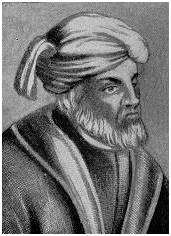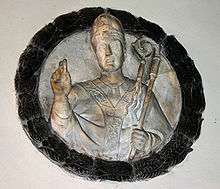Late Latin
Late Latin (Latin: Latinitas serior) is the scholarly name for the written Latin of late antiquity.[1] English dictionary definitions of Late Latin date this period from the 3rd to the 6th centuries AD,[2][3] and continuing into the 7th century in the Iberian Peninsula.[1] This somewhat ambiguously defined version of Latin was used between the eras of Classical Latin and Medieval Latin. There is no scholarly consensus about exactly when Classical Latin should end or Medieval Latin should begin. However, Late Latin is characterized (with variations and disputes) by an identifiable style.
| Late Latin | |
|---|---|
| Latinitas serior | |
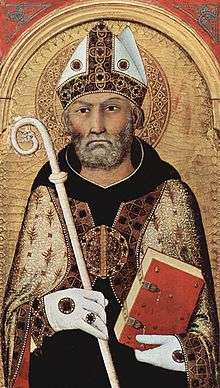 Augustine of Hippo (354–430), Late Latin author | |
| Native to | (Western) Roman Empire, Ostrogothic Kingdom, Gallic Empire |
| Region | Mare Nostrum region |
| Era | 3rd to 6th centuries; developed into Medieval Latin |
Indo-European
| |
Early forms | |
| Latin | |
| Official status | |
Official language in | Both Roman Empires (Later replaced with Koine Greek in the East) |
| Regulated by | Schools of grammar and rhetoric |
| Language codes | |
| ISO 639-3 | – |
| Glottolog | None |
 The Late-Latin speaking world, AD 271 | |
Being a written language, Late Latin is not the same as Vulgar Latin. The latter served as ancestor of the Romance languages. Although Late Latin reflects an upsurge of the use of Vulgar Latin vocabulary and constructs, it remains largely classical in its overall features, depending on the author who uses it. Some Late Latin writings are more literary and classical, but others are more inclined to the vernacular. Also, Late Latin is not identical to Christian patristic Latin, used in the theological writings of the early Christian fathers. While Christian writings used a subset of Late Latin, pagans also wrote extensively in Late Latin, especially in the early part of the period.
Late Latin formed when large numbers of non-Latin-speaking peoples on the borders of the empire were being subsumed and assimilated, and the rise of Christianity was introducing a heightened divisiveness in Roman society, creating a greater need for a standard language for communicating between different socioeconomic registers and widely separated regions of the sprawling empire. A new and more universal speech evolved from the main elements: Classical Latin, Christian Latin, which featured sermo humilis (ordinary speech) in which the people were to be addressed,[4] and all the various dialects of Vulgar Latin.[5] The linguist Antoine Meillet wrote, "Without the exterior appearance of the language being much modified, Latin became in the course of the imperial epoch a new language",[6] and, "Serving as some sort of lingua franca to a large empire, Latin tended to become simpler, to keep above all what it had of the ordinary".[7]
Philological constructs
Late and post-classical Latin
Neither Late Latin nor Late Antiquity are modern terms or concepts; neither are they ancient; their origin remains obscure. A notice in Harper's New Monthly Magazine of the publication of Andrews' Freund's Lexicon of the Latin Language in 1850 mentions that the dictionary divides Latin into ante-classic, quite classic, Ciceronian, Augustan, post-Augustan and post-classic or late Latin,[8][9] which indicates the term already was in professional use by English classicists in the early 19th century. Instances of English vernacular use of the term may also be found from the 18th century. The term Late Antiquity meaning post-classical and pre-medieval had currency in English well before then.
Imperial Latin
Wilhelm Sigismund Teuffel's first edition (1870) of History of Roman Literature defined an early period, the Golden Age, the Silver Age and then goes on to define other ages first by dynasty and then by century (see under Classical Latin). In subsequent editions he subsumed all periods under three headings: the First Period (Old Latin), the Second Period (the Golden Age) and the Third Period, "the Imperial Age", subdivided into the Silver Age, the 2nd century, and Centuries 3–6 together, which was a recognition of Late Latin, as he sometimes refers to the writings of those times as "late." Imperial Latin went on into English literature; Fowler's History of Roman Literature mentions it in 1903.[10]
There are, however, insoluble problems with the beginning and end of Imperial Latin. Politically the excluded Augustan Period is the paradigm of imperiality, and yet the style cannot be bundled with either the Silver Age or with Late Latin. Moreover, in 6th century Italy, the Roman Empire no longer existed; the rule of Gothic kings prevailed. Subsequently, the term Imperial Latin was dropped by historians of Latin literature, although it may be seen in marginal works. The Silver Age was extended a century and the final four centuries represent Late Latin.
Christian, patristic, vulgate and ancient Latin
Low Latin
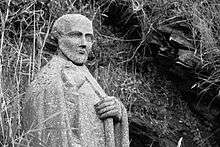
Low Latin is a vague and often pejorative term that might refer to any post-classical Latin from Late Latin through Renaissance Latin depending on the author. Its origins are obscure but the Latin expression media et infima Latinitas sprang into public notice in 1678 in the title of a Glossary (by today's standards a dictionary) by Charles du Fresne, sieur du Cange. The multi-volume set had many editions and expansions by other authors subsequently. The title varies somewhat; most commonly used was Glossarium Mediae et Infimae Latinitatis. It has been translated by expressions of widely different meanings. The uncertainty is understanding what media, "middle", and infima, "low", mean in this context.
The media is securely connected to Medieval Latin by Cange's own terminology expounded in the Praefatio,[11] such as scriptores mediae aetatis, "writers of the middle age." Cange's Glossary takes words from authors ranging from the Christian period (Late Latin) to the Renaissance, dipping into the classical period if a word originated there. Either media et infima Latinitas refers to one age, which must be the middle age covering the entire post-classical range, or it refers to two consecutive periods, infima Latinitas and media Latinitas. Both interpretations have their adherents.
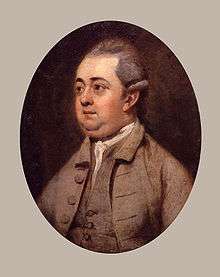
In the former case the infimae appears extraneous; it recognizes the corruptio of the corrupta Latinitas Cange said his Glossary covered.[12] The two-period case postulates a second unity of style, infima Latinitas, translated into English as "Low Latin" (which in the one-period case would be identical to media Latinitas). Cange in the glossarial part of his Glossary identifies some words as being used by purioris Latinitatis scriptores, such as Cicero (of the Golden Age). He has already said in the Preface that he rejects the ages scheme used by some: Golden Age, Silver Age, Brass Age, Iron Age. A second category are the inferioris Latinitatis scriptores, such as Apuleius (Silver Age). The third and main category are the infimae Latinitatis scriptores, who must be post-classical; that is, Late Latin, unless they are also medieval. His failure to state which authors are low leaves the issue unresolved.
He does however give some idea of the source of his infima, which is a classical word, "lowest", of which the comparative degree is inferior, "lower." In the Preface he opposes the style of the scriptores aevi inferioris (Silver Age) to the elegantes sermones, "elegant speech", the high and low styles of Latinitas defined by the classical authors. Apparently Cange was basing his low style on sermo humilis[13], the simplified speech devised by Late Latin Christian writers to address the ordinary people. Humilis (humble, humility) means "low", "of the ground". The Christian writers were not interested in the elegant speech of the best or classical Latin, which belonged to their aristocratic pagan opponents. Instead they preferred a humbler style lower in correctness, so that they might better deliver the gospel to the vulgus or "common people."
Low Latin in this view is the Latin of the two periods in which it has the least degree of purity, or is most corrupt. By corrupt du Cange only meant that the language had resorted to non-classical vocabulary and constructs from various sources, but his choice of words was unfortunate. It allowed the "corruption" to extend to other aspects of society, providing fuel for the fires of religious (Catholic vs. Protestant) and class (conservative vs. revolutionary) conflict. Low Latin passed from the heirs of the Italian renaissance to the new philologists of the northern and Germanic climes, where it became a different concept.
In Britain Gildas' view that Britain fell to the Anglo-Saxons because it was morally slack was already well known to the scholarly world. The northern Protestants now worked a role reversal: if the language was "corrupt" it must be symptomatic of a corrupt society, which indubitably led to a "decline and fall", as Edward Gibbon put it, of imperial society. Writers taking this line relied heavily on the scandalous behavior of the Julio-Claudian dynasty and the bad emperors reported by Tacitus and other writers and later by the secret history of Procopius, who hated his royal employers to such a degree that he could not contain himself about their real methods and way of life any longer. They, however, spoke elegant Latin. The Protestants changed the scenario to fit their ideology that the church needed to be purified of corruption. For example, Baron Bielfeld, a Prussian officer and comparative Latinist, characterised the low in Low Latin, which he saw as medieval Latin, as follows:
French: Le quatrieme âge de la langue Latine, est celui où pendant le reste du moyen âge & les premiers siecles des temps modernes, le Latin tomba successivement dans une telle décadence, que ce ne fut plus qu’un jargon barbare. C’est au Latin de cet âge qu’on a donné le nom de basse Latinité ; […] en effet […] tellement corrompu, altéré, mêlé d’expressions étrangeres […] Et que pouvoit-on espérer pour la langue Latine d’un temps où des Nations Barbares pénétrerent dans toute l’Europe, & sur-tout en Italie, où l’Empire d’Orient étoit gouverné par des imbécilles, où les moeurs étoient abominables, où les arts & les sciences étoient comme anéantis, où les Prêtres & les Moines, &c. étoient les seuls lettrés, & néanmoins les plus ignorans & les plus ineptes personnages du monde. Aussi faut-il ranger sous ces temps ténébreux ce Latin absurde qu’on nommoit lingua Ecclesiastica, & qu’on ne sauroit lire sans dégoût.[14] The fourth age of the Latin tongue is that of the remainder of the middle age, and the 1st centuries of modern times, during which the language fell by degrees into so great a decadency, that it became nothing better than a barbarous jargon. It is the style of these times that is given the name of Low Latin. ... What indeed could be expected from this language, at a time when the barbarians had taken possession of Europe, but especially of Italy; when the empire of the east was governed by idiots; when there was a total corruption of morals; when the priests and monks were the only men of letters, and were at the same time the most ignorant and futile mortals in the world. Under these times of darkness, we must, therefore, rank that Latin, which is called lingua ecclesiastica, and which we cannot read without disgust.[15] — The Elements of Universal Erudition, containing an Analytical Abrigement of the Sciences, Polite Arts and Belles Lettres
As 'Low Latin' tends to be muddled with Vulgar Latin, Late Latin and Medieval Latin and has unfortunate extensions of meaning into the sphere of socioeconomics, it has gone out of use by the mainstream philologists of Latin literature. A few writers on the periphery still mention it, influenced by the dictionaries and classic writings of former times.
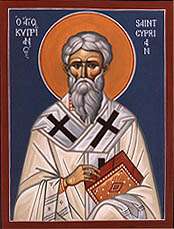
As Teuffel's scheme of the Golden Age and the Silver Age is the generally accepted one, the canonical list of authors should begin just after the end of the Silver Age, regardless of what 3rd century event is cited as the beginning; otherwise there are gaps. Teuffel gave the end of the Silver Age as the death of Hadrian at 138 AD. His classification of styles left a century between that event and his final period, the 3rd–6th centuries BC, which was in other systems being considered Late Antiquity.
Starting with Charles Thomas Crutwell's A History of Roman Literature from the Earliest Period to the Death of Marcus Aurelius, which first came out in 1877, English literary historians have included the spare century in Silver Latin. Accordingly, the latter ends with the death of the last of the five good emperors in 180 AD. Other authors use other events, such as the end of the Nervan–Antonine dynasty in 192 AD or later events. A good round date of 200 AD gives a canonical list of nearly no overlap.
The transition between Late Latin and Medieval Latin is by no means as easy to assess. Taking that media et infima Latinitas was one style, Mantello in a recent handbook asserts of "the Latin used in the middle ages" that it is "here interpreted broadly to include late antiquity and therefore to extend from c. AD 200 to 1500."[16] Although recognizing "late antiquity" he does not recognize Late Latin. It did not exist and Medieval Latin began directly at 200 BC. In this view all differences from Classical Latin are bundled as though they evolved through a single continuous style.
Of the two-style interpretations the Late Latin period of Erich Auerbach and others is one of the shortest: "In the first half of the 6th century, which witnessed the beginning and end of Ostrogoth rule in Italy, Latin literature becomes medieval. Boethius was the last 'ancient' author and the role of Rome as the center of the ancient world, as communis patria, was at an end."[17] In essence, the lingua franca of classical vestiges was doomed when Italy was overrun by the Goths, but its momentum carried it one lifetime further, ending with the death of Boethius in AD 524.
Not everyone agrees that the lingua franca came to an end with the fall of Rome, but argue that it continued and became the language of the reinstituted Carolingian Empire (predecessor of the Holy Roman Empire) under Charlemagne. Toward the end of his reign his administration conducted some language reforms. The first recognition that Late Latin could not be understood by the masses and therefore was not a lingua franca was the decrees of 813 AD by synods at Mainz, Rheims Tours that from then on preaching was to be done in a language more understandable to the people, which was stated by Tours Canon 17 as rustica Romana lingua, identified as proto-Romance, the descendant of Vulgar Latin.[18] Late Latin as defined by Meillet was at an end; however, Pucci's Harrington's Mediaeval Latin sets the end of Late Latin when Romance began to be written, "Latin retired to the cloister" and "Romanitas lived on only in the fiction of the Holy Roman Empire."[19] The final date given by those authors is AD 900.
Through the death of Boethius
- Domitius Ulpianus (170 AD – 228 AD), jurist, imperial officer
- Julius Paulus Prudentissimus (2nd & 3rd centuries AD), jurist, imperial officer
- Aelius Marcianus (2nd & 3rd centuries AD), jurist
- Herennius Modestinus (3rd century AD), jurist
- Censorinus (3rd century AD), historian, essayist
- Quintus Gargilius Martialis (3rd century AD), horticulturalist, pharmacologist
- Gaius Asinius Quadratus (3rd century AD), historian
- Quintus Septimius Florens Tertullianus (AD 160 - 220), "the father of Latin Christianity", polemicist against heresy
- Thascius Caecilius Cyprianus (AD 200 - 258), converted rhetorician, bishop of Carthage, martyr, saint
- Novatianus (200 AD – 258 AD), theologian, rival pope, excommunicant
- Quintus Serenus Sammonicus (2nd century AD, early 3rd century AD), scholar, educator
- Commodianus (3rd century AD), poet, Christian educator
- Lucius Caelius Firmianus Lactantius (AD 240 - 320), converted rhetorician, scholar, Christian apologist and educator
- Ammianus Marcellinus (4th century AD), soldier, imperial officer, historian
- Claudius Claudianus (4th century AD), court poet
- Gaius Julius Solinus (3rd or 4th century AD), topical writer
- Nonius Marcellus (3rd or 4th century AD), topical writer
- Marcus Aurelius Olympius Nemesianus (fl. 283 AD), poet
- Aquila Romanus (3rd century AD), rhetorician
- Eumenius of Autun (3rd century AD), educator
- Aelius Festus Aphthonius (3rd or 4th century AD), grammarian
- Calcidius (4th century AD), translator
- Gaius Marius Victorinus (4th century AD), converted philosopher
- Arnobius of Sicca (4th century), Christian apologist
- Constantine I (272 AD – 337 AD), first Christian emperor
- Nazarius (4th century AD), rhetorician, educator
- Gaius Julius Victor (4th century AD), rhetorician
- Gaius Vettius Aquilinus Juvencus (4th century AD), Christian poet
- Nonius Marcellus (3rd and 4th centuries AD), grammarian, lexicographer
- Julius Firmicus Maternus (4th century AD), converted advocate, pagan and Christian writer
- Aelius Donatus (4th century AD), grammarian, rhetorician, educator
- Palladius (408/431 AD – 457/461 AD), saint, first bishop of Ireland
- Sextus Aurelius Victor (AD 320 - 390), imperial officer, historian
- Eutropius (4th century AD), imperial officer, historian
- Aemilius Magnus Arborius (4th century AD), poet, educator, friend of the imperial family
- Decimius Magnus Ausonius (ca. 310 AD – 395 AD), poet, rhetorician, educator, friend of the imperial family
- Claudius Mamertinus (4th century AD), imperial officer, panegyricist, embezzler
- Hilarius (4th century AD), converted neo-Platonist, theologian, bishop of Poitiers, saint
- Ambrosius (337/340 AD – 397 AD), theologian, Bishop of Milan, saint
- Lucifer (d. 370/371 AD), theologian, Bishop of Sardinia
- Priscillianus (d. 385 AD), theologian, first person executed as a heretic
- Flavius Sosipater Charisius (4th century AD), grammarian
- Diomedes Grammaticus (4th century AD), grammarian
- Postumius Rufus Festus Avienus (4th century AD), imperial officer, poet, translator
- Priscianus Caesariensis (fl. AD 500), grammarian
See also
- Decline of the Roman Empire
- Panegyrici Latini, a collection of 3rd to 4th century panegyrics; their language is however predominantly classical (Golden Age) Latin base, derived from an education heavy on Cicero, mixed with a large number of Silver Age usages and a small number of Late and Vulgar terms.
Notes
- Roberts (1996), p.537.
- "Late Latin". Webster's Third New International Dictionary. Volume II, H to R. Chicago: Encyclopædia Britannica, Inc. 1961.
- "Late Latin". The American Heritage Dictionary of the English Language (3rd ed.). Boston, New York, London: Houghton Mifflin Company.
- Auerbach (1958), Chapter 1, Sermo Humilis.
- Harrington, Karl Pomeroy; Pucci, Joseph Michael (1997). Mediaeval Latin (2nd ed.). Chicago: University of Chicago Press. p. 67. ISBN 0-226-31713-7.
The combination of features specific to Vulgar Latin and Ecclesiastical Latin had the effect, then, of transforming the language by the fourth century into something of extraordinary vigor.
- Meillet (1928), p.270: "Sans que l'aspect extérieur de la langue se soit beaucoup modifié, le Latin est devenu au cours de l'epoque impériale une langue nouvelle}",
- Meillet (1928), p. 273: "Servant en quelque sorte de lingua franca à un grand empire, le Latin a tendu à se simplifier, à garder surtout ce qu'il avait de banal".
- "Harper's New Monthly Magazine, Monthly Record of Current Events". I. 1850: 705. Cite journal requires
|journal=(help) - Ethan Allen Andrews; William Freund (1851). A Copious and Critical Latin-English Lexicon: Founded on the Larger Latin-German Lexicon of Dr. William Freund; with Additions and Corrections from the Lexicons of Gesner, Facciolati, Scheller, Georges, Etc. Harper & Brothers.
- Fowler, Harold North (1903). A History of Roman Literature. New York: D. Appleton and Co. p. 3.
The third or Imperial Period lasts from 14 A. D. to the beginning of the Middle Ages.
- Du Cange, Charles du Fresne; et al. (1840). "Præfatio LXII". Glossarium mediæ et infimæ Latinitatis. Volume 1. Paris: Firmin Didot Fratres. p. 41. Retrieved 1 June 2011.
- Du Cange, Charles du Fresne; et al. (1840). "Præfatio LXIII". Glossarium mediæ et infimæ Latinitatis. Volume 1. Paris: Firmin Didot Fratres. pp. 41–42. Retrieved 1 June 2011.
- https://sermohumilis.com
- The text was originally published in French, the court language of Prussia at the time:
von Bielfeld, Jakob Friedrich (1767). Les premiers traits de l'érudition universelle : ou, analyse abregée de toutes les sciences, des beaux-arts et des belles-lettres. III. Leiden: Luchtmans. p. 317. - von Bielfeld, Jakob Friedrich (1770). The Elements of Universal Erudition, containing an Analytical Abrigement of the Sciences, Polite Arts and Belles Lettres. III. Translated by Hooper, W. London: G. Scott. p. 345.
- Mantello, FAC (1999) [1996]. "Part I". In Mantello, Frank Anthony Carl; Rigg, A. G (eds.). Medieval Latin: an introduction and bibliographical guide. Washington, D.C.: The Catholic University of America Press. p. 3.
- Auerbach (1965), p.85.
- Uytfanghe, Marc Van (1996). "The consciousness of a linguistic dichotomy (Latin-Romance) in Carolingian Gaul: the contradictions of the sources and of their interpretation". In Wright, Roger (ed.). Latin and the Romance languages in the early Middle Ages. University Park, Penn.: Pennsylvania State University Press. pp. 114–120. ISBN 0-271-01569-1.
- Harrington, Karl Pomeroy; Pucci, Joseph Michael (1997). Mediaeval Latin (2nd ed.). Chicago: University of Chicago Press. p. 196. ISBN 0-226-31713-7.
References
- Auerbach, Erich (1965) [1958]. Literary Language and its Public in Late Latin Antiquity and in the Middle Ages. Bollingen Series LXXIV. Trans. Ralph Mannheim. Pantheon Books.
- Meillet, Antoine (1928). Esquisse d'une Histoire de la Langue Latine (in French). Paris: Hachette.
- Roberts, Michael (1996). "The Latin Literature of Late Antiquity". In Anthony, Frank; Mantello, Carl; Rigg, A.G (eds.). Medieval Latin: an introduction and bibliographical guide. Catholic University of America Press. pp. 537–546.
- Teuffel, Wilhelm Sigismund; Schwabe, Ludwig (1892). Teuffel's History of Roman Literature Revised and Enlarged. II, The Imperial Period. Trans. George C.W. Warr (from the 5th German ed.). London: George Bell & Sons.
Further reading
- Adams, J. N., Nigel Vincent, and Valerie Knight. 2016. Early and Late Latin: Continuity Or Change? Cambridge, UK: Cambridge University Press.
- Courcelle, Pierre. 1969. Late Latin Writers and Their Greek Sources. Translated by Harry Wedeck. Cambridge, MA: Harvard University Press.
- Elsner, Jaś, and Jesús Hernández Lobato. 2017. The Poetics of Late Latin Literature. New York: Oxford University Press.
- Langslow, D. R. 2006. The Latin Alexander Trallianus: The Text and Transmission of a Late Latin Medical Book. London: Society for the Promotion of Roman Studies.
- Löfstedt, Einar. 1959. Late Latin. Cambridge, MA: Harvard Univ. Press.
- Wright, Roger. 1982. Late Latin and Early Romance in Spain and Carolingian France. Liverpool, UK: Francis Cairns.
- --. 2003. A sociophilological study of Late Latin. Turnhout, Belgium: Brepols.
External links
| Library resources about Late Latin |
- "Christian Latin" (in Latin). The Latin Library. Retrieved 12 October 2009.
- Du Cange, Charles du Fresne (2009) [1710]. Glossarium ad scriptores mediae et infimae Latinitatis. Francofurti ad Moenum: apud Johannem Adamum Jungium, CAMENA - Corpus Automatum Multiplex Electorum Neolatinitatis Auctorum, University of Heidelberg.
- "du Cange, le Glossarium: en ligne". École nationale des Chartres. 2008. Retrieved 10 October 2009.
- "Glossarium Mediae et Infimae Latinitatis". Documenta Catholica Omnia. 2006. Retrieved 10 October 2009.
